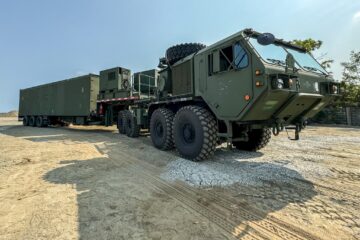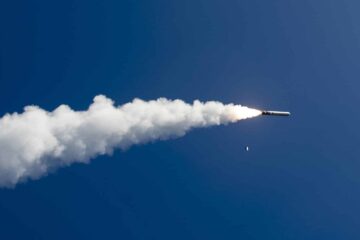According to Japan’s public broadcaster NHK, the reason why the Japanese government is considering the purchase of Tomahawk is that it cannot wait to deploy domestically produced long-range cruise missiles in the face of recent heightened security threats. The Japanese Ministry of Defense (MoD) is currently in the process of extending the range of the Type 12 surface-to-ship missiles deployed by the Ground Self-Defense Force (JGSDF), from the current 200 km to a maximum of 1,200 km. However, the Type 12 SSM with this enhanced capability will not be deployed until 2026, which is believed to be too late to respond to the threats from China and North Korea. Vehicles, ships, and aircraft are all being considered as the launch platform for such missiles. According to the Yomiuri Shimbun, a major Japanese newspaper, loading such missiles on submarines has also been added to the list of options.
At present, it is unclear which variant of the iconic Tomahawk cruise missile the Japanese government may introduce: The Block IV, which is currently in operation by the U.S. Navy and others, or the Block V, which was just delivered in 2021. However, although the Type 12 SSM will have its range extended, its original purpose is to attack ships, and the introduction of the Tomahawk, a mainly land-attack cruise missile, is proof that the Japanese government is serious about having the capability to attack enemy bases and other targets located overseas. The Japanese government is currently planning to revise its National Security Strategy, National Defense Program Guidelines, and Mid-Term Defense Program by the end of 2022. The introduction of long-range cruise missiles, including Tomahawk, is expected to be specifically described in these documents.
Tomahawk for Japan: Why?

To begin with, the reason why the Japanese government started considering the introduction of land attack cruise missiles is deeply related to the cancellation of the deployment of Aegis Ashore in 2020. Originally, Japan’s basic stance has been to respond to the threat of ballistic missiles from North Korea with Ballistic Missile Defense (BMD). However, following the cancellation of the deployment of Aegis Ashore, which was supposed to be a key component of the BMD, then Prime Minister Shinzo Abe stated during a press conference on August 28, 2020, regarding his retirement as prime minister:
“We will examine whether we can truly protect the lives of the people only by improving interception capabilities.”
This statement is believed to indicate his willingness to pursue the possession of some kind of offensive capability. Subsequently, in response to the significant progress in the technological level of North Korea’s ballistic missile development, the Japanese government has been studying ways to enhance deterrence, and on December 6, 2021, Prime Minister Fumio Kishida stated in the Diet:
“In order to protect the lives and livelihood of our citizens, we will examine all options, including so-called enemy base strike capability (敵基地攻撃能力 in Japanese), in a realistic manner without ruling out any options. We will fundamentally strengthen our defense capabilities with an accelerated pace.”
(Note that the term “enemy base strike capability” has now been reworded as “counterstrike capability (反撃能力)”.)
Thus, a major reason for the Japanese government to possess long-range cruise missiles is to counterstrike against enemy missile attacks. However, it does not seem like a good idea to decide to introduce a certain weapon in this manner. Instead of thinking, “If a missile is fired at us, we will strike back,” it is necessary to think, “What kind of victory do we aim for and what kind of missiles do we need to use to achieve that victory?”.
Naval News comments – About Tomahawk:

Tomahawk IV has a longer range than its predecessors (well in excess of 1,000 miles), can be directed at a new target in mid-flight, and can also beam back images of the battlefield to its launch platform. The Royal Navy is the only foreign user of the missile to date.
According to Raytheon, U.S. and allied militaries have flight-tested the GPS-enabled Tomahawk 550 times and used it in combat more than 2,300 times. Its most recent use came in 2018, when U.S. Navy warships and submarines launched 66 Tomahawk missiles at Syrian chemical weapon facilities.
All Tomahawk Block IVs are being upgraded to Block V with longer range and dynamic targeting with the capability to hit vessels at sea (maritime strike role). Raytheon is recertifying and modernizing the missile, extending its service life by 15 years, and resulting in the new Tomahawk Block V series:
- Block V: A modernized TACTOM with upgraded navigation and communication
- Block Va: Block V that can strike moving targets at sea
- Block Vb: Block V, with a joint multi-effects warhead that can hit more diverse land targets






